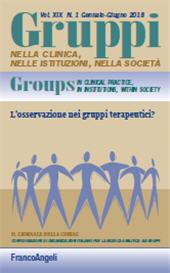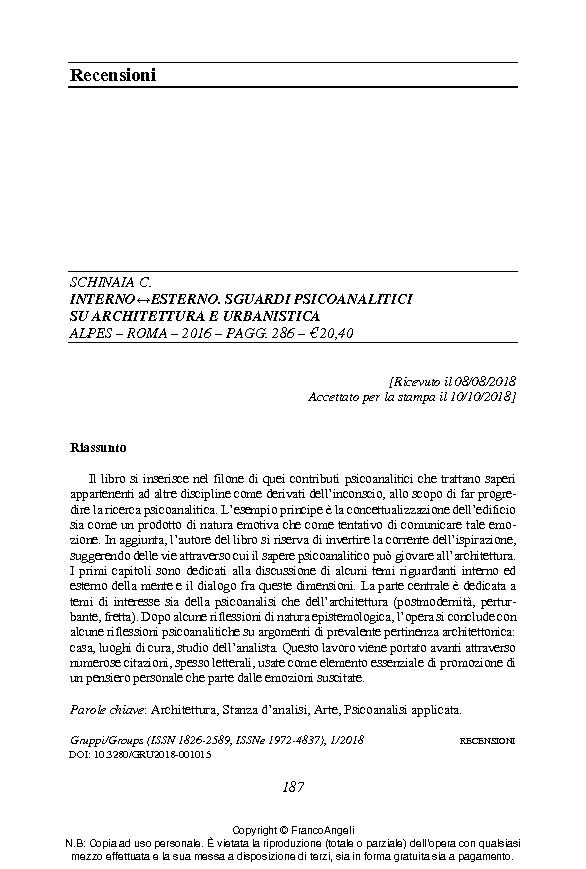Recensioni
187-190 p.
Il libro si inserisce nel filone di quei contributi psicoanalitici che trattano saperi appartenenti ad altre discipline come derivati dell'inconscio, allo scopo di far progredire la ricerca psicoanalitica. L'esempio principe è la concettualizzazione dell'edificio sia come un prodotto di natura emotiva che come tentativo di comunicare tale emozione. In aggiunta, l'autore del libro si riserva di invertire la corrente dell'ispirazione, suggerendo delle vie attraverso cui il sapere psicoanalitico può giovare all'architettura. I primi capitoli sono dedicati alla discussione di alcuni temi riguardanti interno ed esterno della mente e il dialogo fra queste dimensioni. La parte centrale è dedicata a temi di interesse sia della psicoanalisi che dell'architettura (postmodernità, perturbante, fretta). Dopo alcune riflessioni di natura epistemologica, l'opera si conclude con alcune riflessioni psicoanalitiche su argomenti di prevalente pertinenza architettonica: casa, luoghi di cura, studio dell'analista.
Questo lavoro viene portato avanti attraverso numerose citazioni, spesso letterali, usate come elemento essenziale di promozione di un pensiero personale che parte dalle emozioni suscitate. [Testo dell'editore].
This book belongs to the series of psychoanalytic works that treat knowledge belonging to other disciplines as derivatives of the unconscious. The objective is to use this knowledge as a mean to advance psychoanalytic research. The main example of this kind of thought process to be found in the book is the conceptualization of a building as both a product of an emotional nature and the attempt to communicate this emotion. In addition, the author of the book reserves the right to invert the current of the inspiration by suggesting some ways in which psychoanalytic knowledge can be of benefit to architecture. The first chapters are dedicated to the discussion of some themes about the interior and the exterior of the mind and about the dialogue that exists between these two dimensions. The central part of the book is dedicated to themes that are of interest both of psychoanalysis and of architecture (postmodernity, the uncanny, the sense of hurry).
After some epistemological reflections, the work ends with some psychoanalytic thoughts on topics of prevalent architectural relevance: the house, places of care, the analyst's office. The book's writing is carried on through several quotes, frequently literal, used as an essential element towards the promotion of a form of personal thought that has its roots in the emotions that it arouses. [Publisher's text].
-
Artikel aus derselben Ausgabe (einzeln erhältlich)
-
Informationen
ISSN: 1972-4837
KEYWORDS
- Architettura, Stanza d'analisi, Arte, Psicoanalisi applicata
- Architecture, Analyst's office, Art, Applied psychoanalysis



